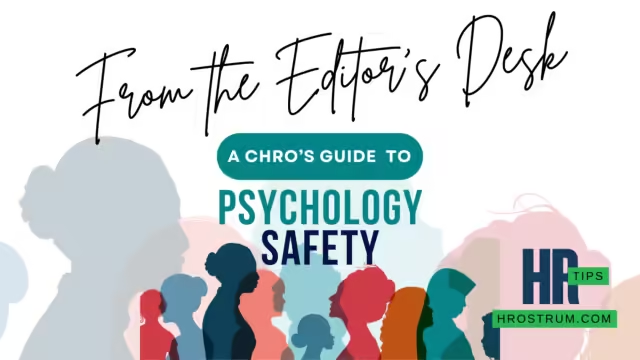Introduction
Creating Psychological safety—the belief that one can speak up without fear of punishment or humiliation—has become a cornerstone of successful organizational culture. For Chief Human Resources Officers (CHROs), fostering psychological safety is not just a cultural initiative but a strategic imperative that drives innovation, engagement, and organizational performance.
Creating Psychological Safety
Definition and Importance
Psychological safety, a term established through the seminal work of Harvard Business School professor Amy Edmondson in her 1999 publication “Psychological Safety and Learning Behavior in Work Teams” (Administrative Science Quarterly), describes an environment where employees feel safe to take interpersonal risks. This includes speaking up, sharing ideas, admitting mistakes, and raising concerns without fear of negative consequences.
Google’s Project Aristotle, a comprehensive study of team effectiveness, identified psychological safety as the most critical factor in high-performing teams, reinforcing its fundamental importance in organizational success.
The Business Case
Organizations with high psychological safety consistently demonstrate:
- Increased innovation and creativity
- Higher employee engagement and retention
- More effective problem-solving
- Stronger team collaboration
- Better risk management through open communication
Key Pillars for Building Psychological Safety
1. Leadership Behavior and Modeling
Leaders must actively demonstrate the behaviors they wish to see:
- Admitting their own mistakes and showing vulnerability
- Actively seeking input and feedback from all levels
- Responding constructively to bad news or failures
- Showing appreciation for diverse perspectives

Communication Framework for open Dialogues
2. Communication Framework
Establish clear communication channels and expectations:
- Create structured forums for open dialogue
- Implement regular feedback mechanisms
- Develop clear escalation pathways
- Ensure communication flows both up and down the organization
3. Team Dynamics and Norms
Foster healthy team interactions through:
- Establishing team agreements on communication and collaboration
- Creating opportunities for relationship building
- Setting clear expectations around respectful disagreement
- Encouraging healthy conflict resolution
Implementation Strategies
Assessment and Baseline
Begin with a clear understanding of your current state:
- Conduct psychological safety assessments
- Gather feedback through employee surveys
- Review incident reports and feedback patterns
- Analyze turnover data and exit interview themes
Policy and Process Development
Create supporting structures:
- Develop clear policies against retaliation
- Establish fair conflict resolution processes
- Create recognition programs for collaborative behaviors
- Implement training programs on psychological safety
Training and Development
Invest in capability building:
- Leadership development focused on psychological safety
- Manager training on creating safe spaces
- Team workshops on effective communication
- Conflict resolution skill development
Measuring Success
Key Metrics
Track progress through:
- Employee engagement scores
- Speaking up rates in meetings
- Innovation metrics
- Error reporting rates
- Employee feedback participation
- Retention rates
Continuous Improvement
Implement regular review cycles:
- Quarterly assessments of psychological safety metrics
- Regular pulse surveys
- Focus groups and listening sessions
- Leadership behavior assessments
Common Challenges and Solutions
Challenge 1: Resistance to Change
Some leaders may view psychological safety as “soft” or unnecessary. Solution: Share concrete data on the business impact and provide specific examples of success stories.
Challenge 2: Inconsistent Implementation
Different departments or managers may approach psychological safety differently. Solution: Create clear standards and accountability measures while allowing for appropriate contextual adaptation.
Challenge 3: Cultural Barriers
Existing cultural norms may work against psychological safety. Solution: Start with small wins and gradually build momentum through visible success stories.
Best Practices for Sustainability
Embedding in Culture
Make psychological safety part of your organizational DNA:
- Include in values and behavioral competencies
- Factor into performance evaluations
- Consider in promotion decisions
- Integrate into onboarding processes
Regular Reinforcement
Keep psychological safety top of mind:
- Share success stories and examples
- Recognize and celebrate positive behaviors
- Provide ongoing training and support
- Regular leadership messaging and commitment
Conclusion
Creating psychological safety is a journey that requires sustained commitment and effort. The research of Amy Edmondson and subsequent studies by organizations like Google have demonstrated that psychological safety is fundamental to team and organizational success. As CHRO, your role is to architect the framework, guide implementation, and ensure sustainability. Success comes not from perfect execution but from consistent progress and genuine commitment to creating an environment where all employees feel safe to be themselves and contribute fully.
Follow us on LinkedIn at https://www.linkedin.com/company/hrostrum/
Access Similar articles on HRostrum here










